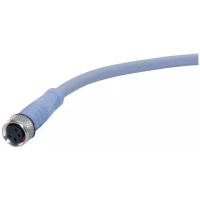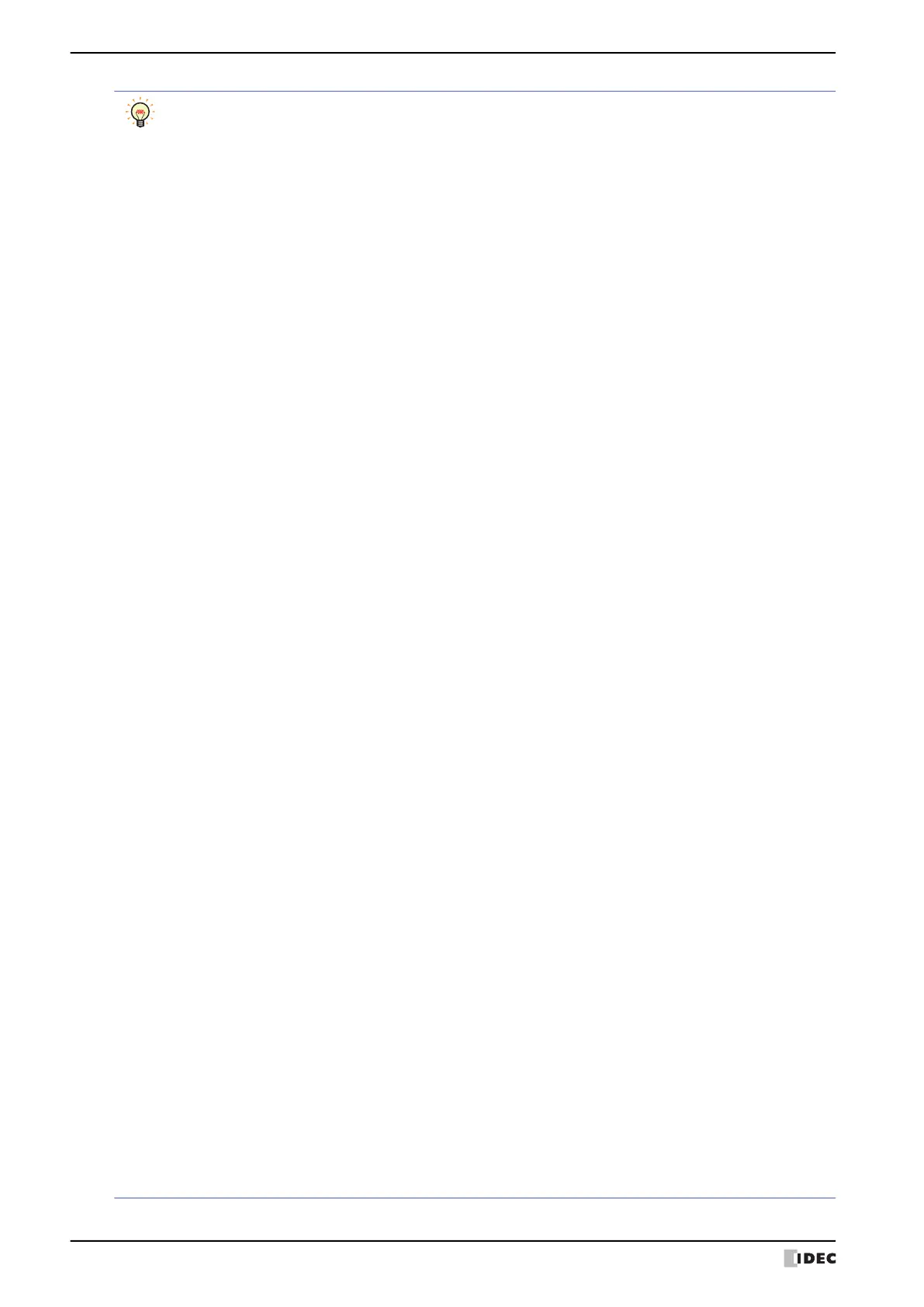4 Using the Data
14-46 WindO/I-NV4 User’s Manual
• The data size for each row is counted as 2 bytes for full-width characters, 1 byte for half-width characters,
and 2 bytes for newlines. The total for each row is the total amount of space for the file.
• A space is inserted before the year in the data row.
• The display type for the date and time differs according to the language configured in Project Settings,
on the Project Details tab, in Language.
Japanese: YYYY/MM/DD hh:mm:ss
Western,
Simplified Chinese, Traditional Chinese, Hangul, Central European, Baltic, Cyrillic:
MM/DD/YYYY hh:mm:ss
• The output values of the data row will depend on Data Type of the data.
- When Data Type of the data is String(S)
The values of the set amount of words of device addresses stored from Top Device Address are
converted to a string and output.
However, if NULL(00h) appears in the string, the characters after NULL(00h) are not output.
The order of characters output to the CSV file is set according to Storage Method of String Data on
the System tab in the Project Settings dialog box.
Example: Starting device address: LDR0, number of words: 3
Stored values: LDR0=0x3132, LDR1=0x3334, LDR2=0x3536 => Output value: 123456
Stored values: LDR0=0x3132, LDR1=0x3300, LDR2=0x3435 => Output value: 123
If the string contains the following codes, the entire string will be enclosed with double quotation
marks (") and output.
Comma (,)
Newline codes (CR, LF, and CR+LF)
Double quotation mark (")
If the string contains a double quotation mark ("), a double quotation mark (") will be added in front of
it.
Example: Starting device address: LDR0, number of words: 3
Stored values: LDR0=0x312C, LDR1=0x3334, LDR2=0x0000 => Output value: "1,34"
Stored values: LDR0=0x310D, LDR1=0x3334, LDR2=0x0000 => Output value: "1[CR]34"
Stored values: LDR0=0x3122, LDR1=0x3334, LDR2=0x0000 => Output value: "1""34"
- When Data Type is UBIN16(W), BIN16(I), UBIN32(D), BIN32(L), BCD4(B), BCD8(EB), or
Float32(F)
The value is output according to the setting of Display Type.
The zeros in the value are suppressed.
If the stored value exceeds the number of display digits, the upper portion of the value is cut and only
the lower portion of the value is output for data types other than Float32(F) (source data: integer
value). For Float32(F) (source data: decimal value), the upper value of the integer part and lower
value of the decimal part are cut and the value is output in the number of display digits.
If an invalid number has been stored, #N/A is output.
If a comma (,) is used as the decimal point, the entire string is enclosed with double quotation marks
(") and output.
Example: Starting device address: LDR0, number of words: 1
Stored value: LDR0=0x04D2
Data Type is UBIN16(W), Display Digits is 5 => Output value: 1234
Data Type is UBIN16(W), Display Digits is 2 => Output value: 34
Data Type is UBIN16(W), Display Digits is 2, Floating Digits is 1, Floating Symbol
is . (dot) => Output value: 3.4
Data Type is UBIN16(W), Display Digits is 2, Floating Digits is 1, Floating Symbol
is , (comma) => Output value: "3,4"
Data Type is BCD4(B), Display Digits is 4 => Output value: #N/A
Example: Starting device address: LDR0, number of words: 2
Stored values: LDR0=0xA000, LDR1=0x0000
Data Type is BIN16(I), Display Digits is 5 => Output value: -24576
Data Type is BIN16(I), Display Digits is 2 => Output value: -76
Data Type is BIN16(I), Display Digits is 2, Floating Digits is 1, Floating Symbol is .
(dot) => Output value: -7.6
Data Type is Float32(F), Display Digits is 10 => Output value: #N/A

